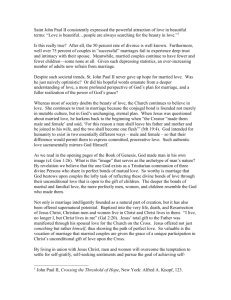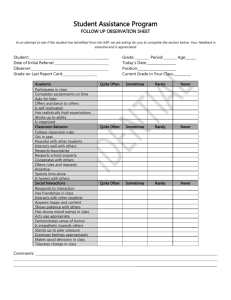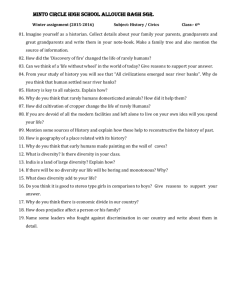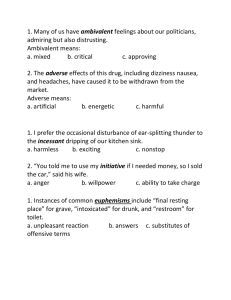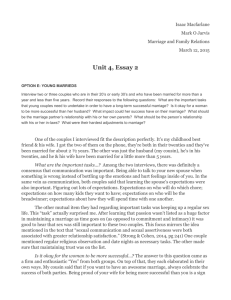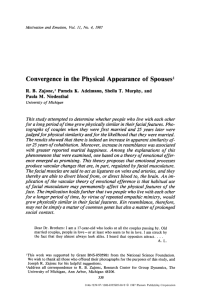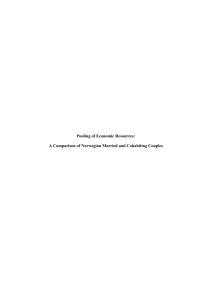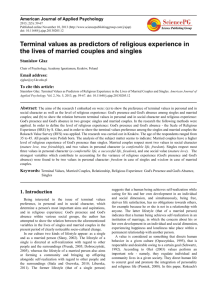History of Family Life
advertisement
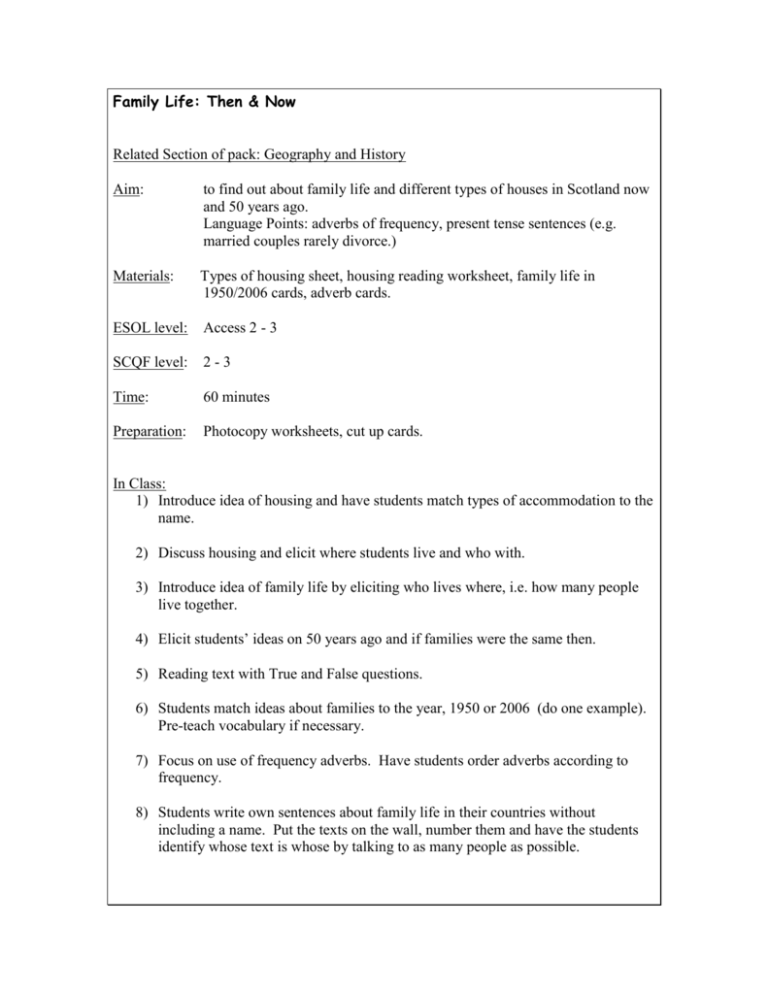
Family Life: Then & Now Related Section of pack: Geography and History Aim: to find out about family life and different types of houses in Scotland now and 50 years ago. Language Points: adverbs of frequency, present tense sentences (e.g. married couples rarely divorce.) Materials: Types of housing sheet, housing reading worksheet, family life in 1950/2006 cards, adverb cards. ESOL level: Access 2 - 3 SCQF level: 2-3 Time: 60 minutes Preparation: Photocopy worksheets, cut up cards. In Class: 1) Introduce idea of housing and have students match types of accommodation to the name. 2) Discuss housing and elicit where students live and who with. 3) Introduce idea of family life by eliciting who lives where, i.e. how many people live together. 4) Elicit students’ ideas on 50 years ago and if families were the same then. 5) Reading text with True and False questions. 6) Students match ideas about families to the year, 1950 or 2006 (do one example). Pre-teach vocabulary if necessary. 7) Focus on use of frequency adverbs. Have students order adverbs according to frequency. 8) Students write own sentences about family life in their countries without including a name. Put the texts on the wall, number them and have the students identify whose text is whose by talking to as many people as possible. Variation: More emphasis could be put on writing by having Ss create their own truefalse quiz in groups. If students are comfortable with writing, they could make posters about family life then and now in their country. This could be a group activity. If language abilities are high enough, students could list the advantages and disadvantages of life then and now. Assessment: The task helps prepare learners for the following summative assessments: Access 2 Beginner’s English Outcomes 1 & 2 (DA9M 08) Access 3 Personal and Social English Outcomes 1 & 2 (DA9K 09) Family Life: Then & Now 1 2 3 Match the pictures of the houses to the names. 4 5 6 Match the pictures of houses to the names: E.g. Terraced house __3___ Block of flats ______ Semi-detached ______ Bungalow ______ Detached house ______ Tenement ______ House name A house which is not joined to any other. ____________ A house which is joined to another on one side. ____________ A tall building which has many flats on each floor. ____________ A house which is joined to other houses on both sides. ____________ An old four-storey building with 8 or more flats. ____________ A house on one level. ____________ 1950 or 2006? ________ __________ My name is Jack. I live in a Glasgow tenement. There are 6 people in my family, my mother and father, my two sisters and my younger brother and me. In our flat there are two rooms, the kitchen/living room and the bedroom. It is a small flat so we don’t have much space. We share an outside toilet with the neighbours. In the morning we usually get up early and I always play football with my friends. Sometimes my sisters play too. Occasionally my mother shouts at us from the window. In the evening we sometimes have a bath in the living room. My name is Sarah. I live in a Glasgow tenement. I live alone. In my flat there are four rooms, the kitchen, the living room, the bedroom and the bathroom. It’s a nice flat and always warm. I share the garden with my neighbours. In the morning I always get up early and go to work. I sometimes come home late from work. Usually at the weekend I visit my friends or go shopping. I rarely have a bath but I always have a shower in the morning. True or false? e.g. Sarah lives by herself. True False 1. Sarah never has a bath. True False 2. Jack always plays football with his friends. True False 3. Sarah shares the toilet. True False 4. Jack sometimes has a shower. True False 5. Sarah’s flat has four rooms. True False 6. Jack’s flat isn’t big. True False 2006 1950 Married couples usually live by themselves. Married couples often live with parents. Married couples sometimes divorce. Married couples rarely divorce. Couples sometimes have children before marriage. Couples rarely have children before marriage. Men and women often live together before marriage. Men and women rarely live together before marriage. Women often have children in their 30s. Women usually have children in their teens or 20s. Families sometimes have only one parent. Families rarely have only one parent. Women sometimes stay home to look after children. Women almost always stay at home to look after children. Always Usually Often Sometimes Occasionally Rarely Never

